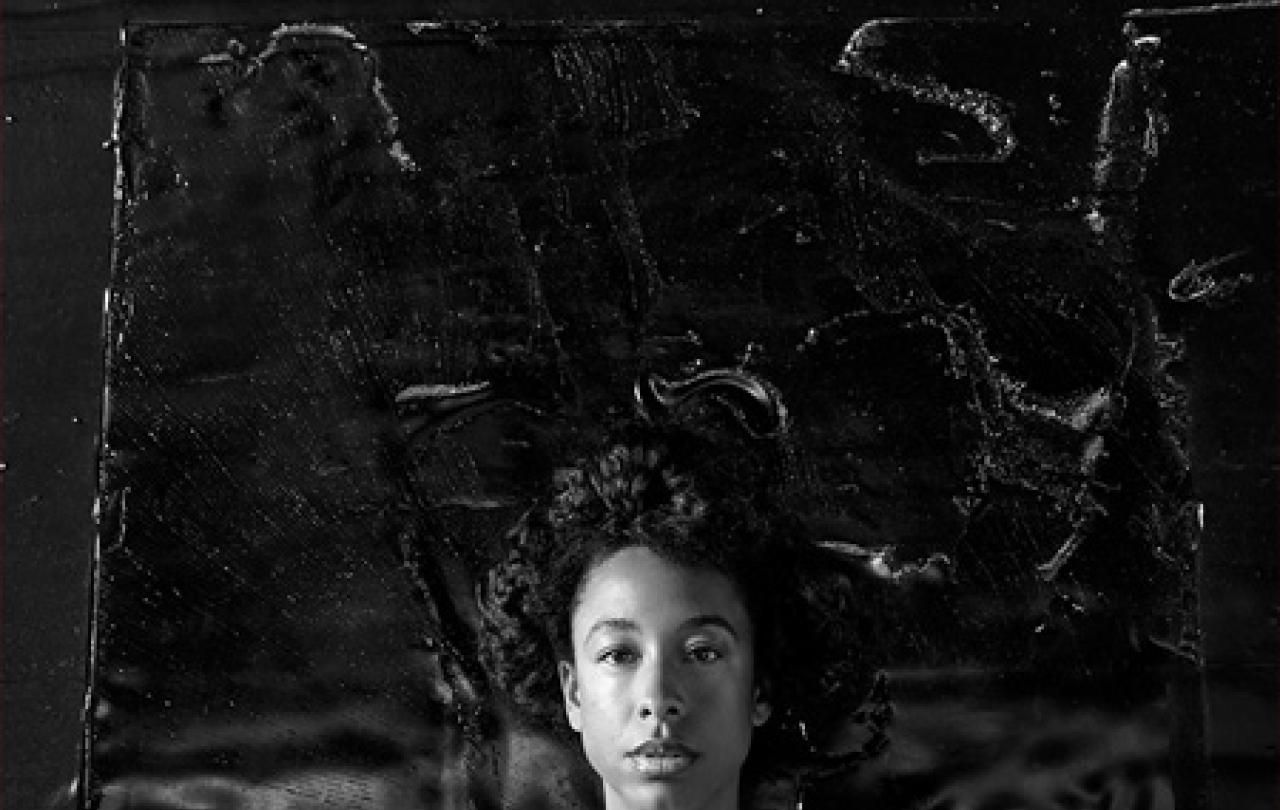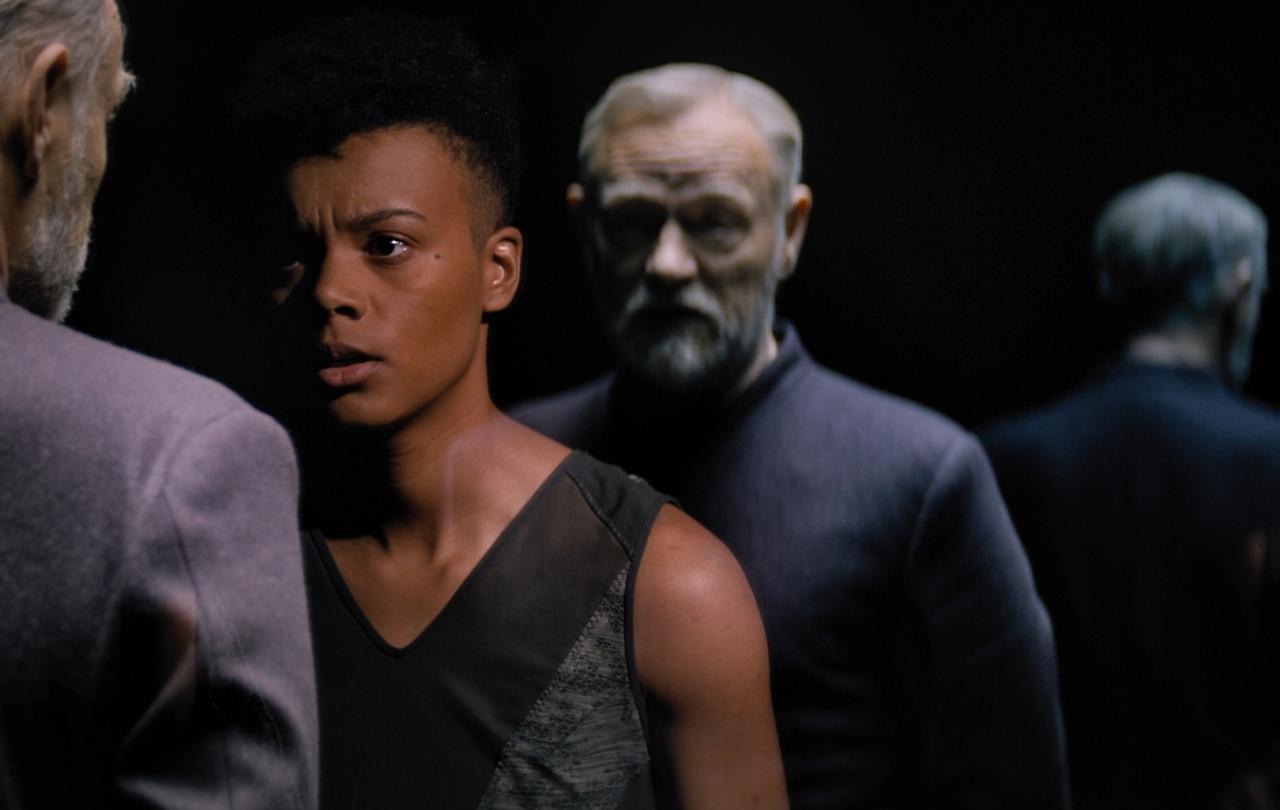
Black Rainbows is the latest album from multi award-winning singer-songwriter Corinne Bailey Rae. Part of a project which also includes a book Reflections/Refractions at the Arts Bank photographed by Koto Bolofo, live performances, visuals, lectures, exhibitions and more, the album is inspired by the objects and artworks collected by artist, archivist and curator Theaster Gates at the Stony Island Arts Bank in Chicago. Bailey Rae attended The Black Artists Retreat there in 2017 and performed in the space. Last year Bailey Rae performed in Black Chapel, the Serpentine Gallery Pavilion designed by Gates. A shared element of their collaborations, work and inspirations are their Baptist upbringings and experiences.
Black Rainbows represents a significant development in Bailey Rae's music and career. By turns angry and reflective, noisy and still, celebratory and keening, original and grounded, the album broadens her musical palette considerably through a marvellous melange of electronica, jazz and punk meshed with soul and R&B. The album ranges from righteous railing against the casual erasure of Black lives and memories to a vision of a world in which we dig our gardens and live, find work and time to dance, in a new utopia. It also extends Bailey Rae’s exploration of and engagement with black history and culture beyond her own experience, through collaborations with Gates and also the Stony Island Arts Bank, which was her inspiration for the album. Her longing, shared in ‘A Spell, a Prayer’, is to arc an arm through history in order to unpick every thread.
Bailey Rae has spoken of the way in which her visit in 2017 to the Stony Island Arts Bank at the invitation of Gates, its founder, transformed her.
“I knew when I walked through those doors that my life had changed forever.”
Two things changed. One was a deeper engagement with the Stony Island Arts Bank's basic premise that black people matter, black spaces matter and black objects matter. The other was developing the confidence, through the example of Gates as artist, lecturer, potter, choir director, business owner, to, as she has said in an interview for Wilful Publicity, just:
"be myself and follow all of my interests and allow all my fascinations and obsessions to come through in my music in the belief that we are all people, and we all have those connections and questions and interests."
Christian Viveros-Faune has written that Gates developed his practice as "an artist-curator-activist", serving "different kinds of communities as an artistic ‘bridge’," out of engagement with the Church, having been both Director of Chicago’s New Cedar Grove Missionary Baptist Church Choir and "an urbanist in Seattle for a Christian mission that ran a housing programme in poor neighbourhoods.” His artistic projects have included processing a 250-person gospel choir he assembled from local churches through the galleries of the Milwaukee Art Museum while singing hymns Gates had scored as a response to poems written by the slave-era potter Dave Drake. The musical offerings of Gates' house band, the Black Monks of Mississippi, also combine spirituals with Zen chants. The Black Monks of Mississippi performed in Black Chapel, as also did Bailey Rae.
His entrepreneurial projects have included the Dorchester Art and Housing Collaborative which consists of 32 units made for those who receive affordable and low-income housing support with a space for theatre and dance, and a mission is to share culture first with the folk residing in the 32 units. Similarly, the bank at 68th and Stony Island was once a vibrant community savings and loan bank but today, through Gates’ intervention, provides the South Side of Chicago with 17,000 square feet of space for innovation in contemporary art and archival practice.
Surprisingly, the kind of faith-informed arts-and-community-connecting entrepreneurship practised by Gates, is not unknown to Bailey Rae through her own background. As a member of Moortown Baptist Church, she was part of Revive, a fresh expression of Church begun by then Youth Pastor Simon Hall. Bailey Rae has said that Hall encouraged the young people in Revive to write their own songs, provided a first guitar for her, and encouraged her to develop a "capacious faith." Her first recordings were on the Revive albums Beautiful Day and Neither Work nor Leisure. Under Halls' leadership, Revive has become a church for people who like Jesus but aren't too sure about church. He has also developed Left Bank as a community arts venue (of which Bailey Rae is a patron) in a disused Anglican church, whilst also setting up The Wren Bakery, a social enterprise using baking and barista training as tools to help women build self-belief and gain transferable skills for employment, and Queer Church Leeds, a community which celebrates LGBTQ+ people and aims to create a safe and open space for both fellowship and discussion.
Bailey Rae has shared her own exploration of faith in her music through songs such as 'I Would Like to Call It Beauty,' ‘Walk On’ and 'The Skies Will Break' and has done so in relation to both grief and celebration. Steve Stockman writes of one such song:
“Love’s On Its Way is a prayer. It begins “Oh Father”, confesses misunderstanding at the great mysteries, looks at the state of the world and then after more confession asks that her response to this world would not be just the prayer but the action of her life."
Black Rainbows ends with a stunningly beautiful track 'Before the Throne of the Invisible God' inspired by a book in the Stony Island Arts Bank about the rock churches of Lalibela in Ethiopia; ancient churches hewn from rock. In an interview with Forbes magazine, Bailey Rae said:
"On one of the pages of this book, it said, it was a picture of a throne that had been made. So it was carved into the wall, solid stone wall. There was a throne and this is where God was meant to sit when God was in the temple. But I really loved that line, the Throne to the invisible God. I thought, before the throne of the invisible God, what else is there to do but kneel? What is the invisible God? What is the thing, the reason, the way we get here, the how, the why, the infinite, the eternal, the thing that makes us all connected?"
This is where Black Rainbows ends. Through its tracks, Bailey Rae takes us on a journey from the rock hewn churches of Ethiopia, to the journeys of Black Pioneers Westward, from Miss New York Transit 1957, to how the sunset appears from Harriet Jacobs' loophole, in order to explore Black femininity, Spell Work, Inner Space/Outer Space, time collapse and ancestors, the erasure of Black childhood and music as a vessel for transcendence. Yet, 'Before the Throne of the Invisible God' is where her energised and empathetic, wracked and anguished, celebratory and creative journey through Black history and the continuing legacy of racism finds its resolution. In a place not of simple submission, but of living the questions raised by a capacious faith where responses to prayer are both the actions of life and also the explorations found on this album.





